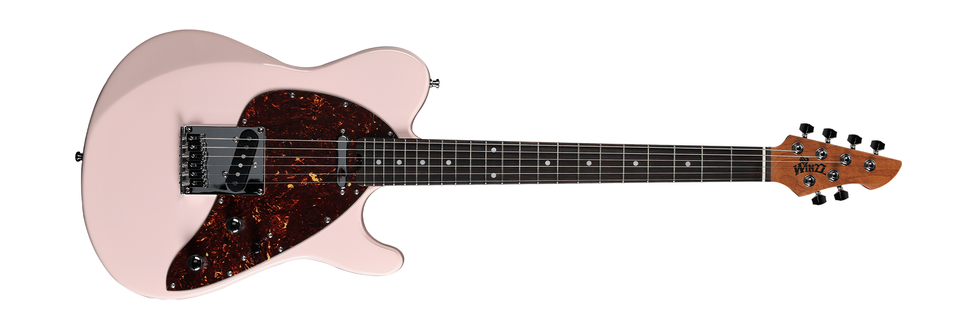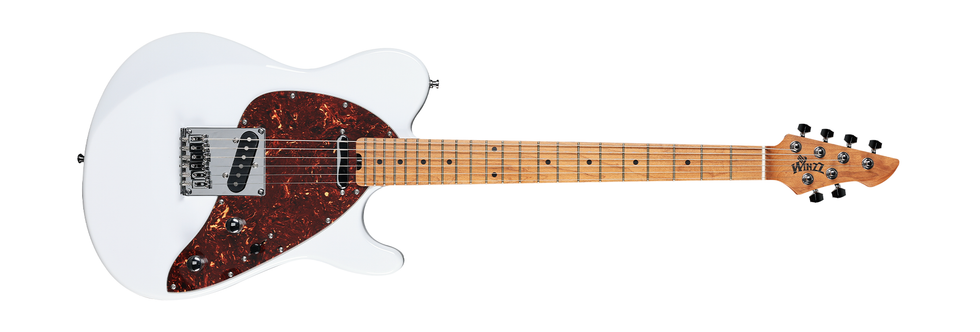I hope you’re not too bored by all the research advice I gave you last month – I promise dating your guitar is a lot more fun. Many guitar collectors are concerned with the exact year of their guitar, but in reality year-to-year models don’t alter value that much. Condition is a much larger factor in determining value (unless there was a substantial construction or feature change). Regardless, dating your guitar may be helpful and in some cases required to determine what it is and how much it is worth. This month I’ll focus on dating your guitar and provide a brief guide to serialization.
In a perfect world every guitar would have some kind of date code – but we don’t live in a perfect world and many guitars don’t have squat for identification! Let’s start with guitars that have a serial number. Look over the entire guitar to find the number, as it may be hidden. In most cases, serial numbers were stamped or inked on guitars right before they were shipped, meaning a serial number is more of a ship date rather than a production date. At large facilities where hundreds of guitars were produced (think Fender and Gibson), the dates were stamped or written on several guitars at the same time. In this case, with a few days between production and the date stamp, it doesn’t make much of a difference. However, in the 1950s and ‘60s, production was much less organized than it is today. I’ve heard stories about how some guitars were almost finished, but they sat on the rack for months, if not years! For instance, if a guitar has a serial number indicating 1962 (meaning it was probably shipped from the factory in 1962), but was actually built two years earlier in 1960, what is the correct year? (We could argue about this for some time, but since this is your guitar, think what you want!) The good news is that a lot of serialization has been documented on the popular brands as far as serial numbers. Substantial lists exist for Epiphone, Fender, Gibson, Gretsch, Guild, Martin, Rickenbacker, and Yamaha for instance. Check the Internet for any lists that enthusiasts have created. If the company is still in business try calling them, as many still have shipping ledgers on hand. On the other hand, overseas-built guitars are an entirely different animal. With several factories building guitars for the same brand, the numbers are all over the place. Perhaps the future holds these numbers but not today. Keep in mind that the serial number may contain more information than just the year of production: manufacture location, production number, batch number, etc.
If your guitar doesn’t have a number, don’t worry – there are other ways to date it. Some guitars may have a date code stamped on the body, neck, or some other piece of hardware. These date codes are a fairly accurate way to date a guitar unless the pieces have been replaced. In this case originality is extremely important! All potentiometers (volume and tone knobs) should have a date code. Some pickups may have codes. Once again, find some resources to check your numbers against, but before you start dismantling your guitar, make sure you know what you are doing as I claim no responsibility for leftover pieces once you put it back together!
An extremely helpful method of dating that I use is to cross reference the unique features of the guitar to the dates they were offered. For instance, say you have a Les Paul Deluxe finished in Wine Red with a serial number of 625315 and “Made In USA” stamped under it. According to Gibson serialization, this serial number indicates it could be a 1970, 1971, 1972, 1974, or 1975. This is too broad of a range as the difference in value between a 1970 guitar and a 1975 guitar is a few thousand dollars! However, after researching Les Pauls, I found that Wine Red finish was introduced in 1975, which eliminates the possibility of the guitar being produced before that. This can be applied to pickups, knobs, construction, or just about any feature that changed during the production run.
Please remember that serialization is to be used only as a guideline. To properly date your guitar you need to go through many of the steps I listed above to really get a grasp on the year of your guitar. Next month, I’ll continue my series on identifying, dating, and evaluating your guitars with the million dollar question – Trash or Treasure?
Zachary R. Fjestad
Zachary R. Fjestad is the author of the Blue Book of Acoustic Guitars, Blue Book of Electric Guitars, and the Blue Book of Guitar Amplifiers.
Guitar Trash or Treasure Questions can be submitted to:
Blue Book Publications
Attn: Guitar Trash or Treasure
8009 34th Ave. S. Ste #175
Minneapolis, MN 55425
800-877-4867
www.bluebookinc.com
guitars@bluebookinc.com
Please include pictures of your guitars.












![Rig Rundown: Russian Circles’ Mike Sullivan [2025]](https://www.premierguitar.com/media-library/youtube.jpg?id=62303631&width=1245&height=700&quality=70&coordinates=0%2C0%2C0%2C0)








